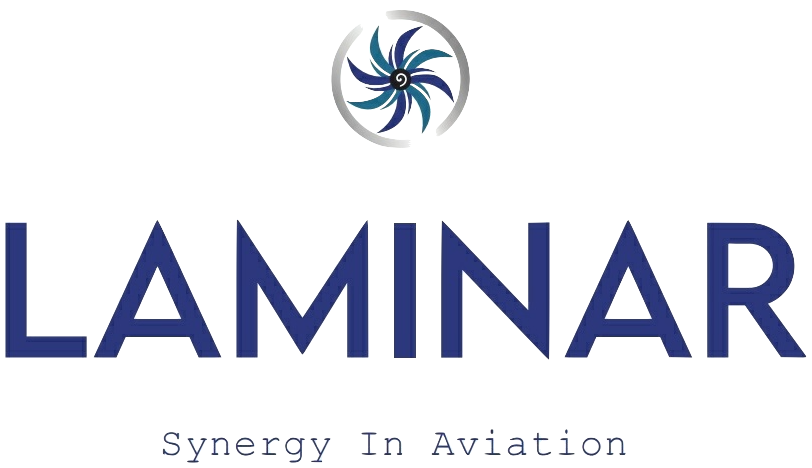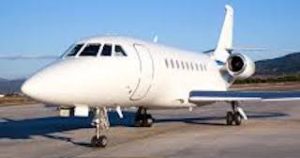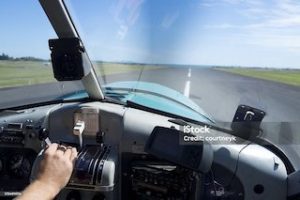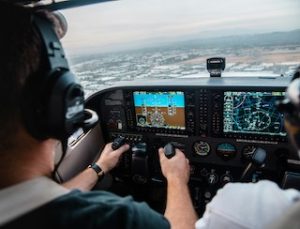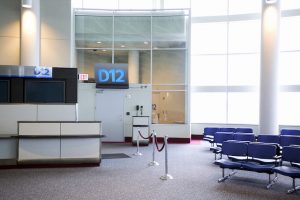Abnormal Situations In Flight Simulators
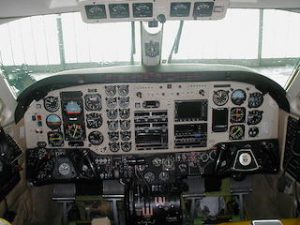 Flight simulators have become an indispensable tool in the training and development of pilots. They provide a safe, controlled environment where pilots can practice and hone their skills, particularly in handling abnormal situations. These simulators recreate a wide range of emergency and non-standard scenarios, allowing pilots to experience and respond to them without the risks associated with actual flight. This article delves into the various abnormal situations covered in flight simulator training, highlighting their importance and the realistic training scenarios that prepare pilots for real-world challenges.
Flight simulators have become an indispensable tool in the training and development of pilots. They provide a safe, controlled environment where pilots can practice and hone their skills, particularly in handling abnormal situations. These simulators recreate a wide range of emergency and non-standard scenarios, allowing pilots to experience and respond to them without the risks associated with actual flight. This article delves into the various abnormal situations covered in flight simulator training, highlighting their importance and the realistic training scenarios that prepare pilots for real-world challenges.
Flight simulator training
Flight simulators are sophisticated devices that replicate the cockpit of an aircraft and simulate various flight conditions. They provide an immersive experience, with realistic visuals, sounds, and motions that mimic real flight. Pilots use these simulators to practice standard procedures, but they are especially valuable for training in abnormal and emergency situations that are difficult or dangerous to replicate in actual flight.
Training for abnormal situations
Training for abnormal situations is crucial for several reasons:
- Safety: It enhances a pilot’s ability to handle emergencies effectively, ensuring the safety of passengers, crew, and the aircraft
- Confidence: It builds confidence, as pilots know they can manage unexpected situations.
- Proficiency: Regular practice in simulators keeps pilots proficient in handling rare but critical events.
- Regulatory compliance: Regulatory authorities often mandate simulator training for specific abnormal situations to ensure all pilots meet safety standards.
Abnormal situations covered in flight simulators
Flight simulators cover a wide range of abnormal situations, from technical malfunctions to environmental challenges. Here are some of the key scenarios pilots are trained to handle:
1) Engine failures
Engine failures are among the most critical emergencies a pilot can face. Simulators provide realistic scenarios for different types of engine failures:
-
- Single engine failure: For multi-engine aircraft, pilots practice handling the aircraft with one engine inoperative, including maintaining control and performing emergency landings.
- Dual engine failure: Although rare, simulators can replicate total engine failures, requiring pilots to glide the aircraft to a safe landing.
- Engine fire: Pilots practice extinguishing engine fires using onboard fire suppression systems and executing emergency procedures.
2) Electrical system failures
Electrical systems are vital for the operation of modern aircraft. Simulators help pilots manage various electrical failures:
-
- Complete electrical failure: Pilots learn to handle a total loss of electrical power, relying on backup systems and manual controls.
- Partial electrical failure: Scenarios include the failure of specific electrical components, such as navigation or communication systems, and how to continue the flight safely.
3) Hydraulic system failures
Hydraulic systems control many critical aircraft functions, including landing gear, brakes, and flight controls. Simulator training includes:
-
- Loss of hydraulic pressure: Pilots practice dealing with the loss of hydraulic pressure, using alternate systems or manual controls.
- Hydraulic fluid leak: Scenarios involve detecting and managing hydraulic fluid leaks, ensuring continued control of the aircraft.
4) Flight control malfunctions
Flight control malfunctions can severely affect the aircraft’s maneuverability. Simulators cover:
-
- Jammed controls: Pilots practice procedures for dealing with jammed ailerons, elevators, or rudders.
- Asymmetric flap deployment: Scenarios include one wing’s flaps deploying while the other remains retracted, requiring pilots to manage the asymmetry.
5) Cabin pressurisation issues
Maintaining cabin pressure is essential for passenger and crew safety. Simulators help pilots handle:
-
- Rapid decompression: Pilots practice emergency descent procedures and the use of oxygen masks in the event of sudden cabin pressure loss.
- Slow decompression: Scenarios include identifying and managing slow decompression, ensuring oxygen supply and descent to a safe altitude.
6) Environmental challenges
Pilots must be prepared to handle various environmental conditions. Simulator training includes:
-
- Severe turbulence: Pilots experience and manage severe turbulence, including securing the cabin and adjusting flight paths.
- Icing conditions: Scenarios involve detecting and responding to icing conditions, using de-icing systems to maintain control.
- Wind shear: Pilots practice recognising and escaping wind shear, a rapid change in wind speed and direction that can be dangerous during takeoff and landing.
7) Navigation and communication failures
Effective navigation and communication are crucial for flight safety. Simulators train pilots for:
-
- Loss of GPS: Pilots practice navigating using traditional aids like VOR and NDB when GPS signals are lost.
- Communication failures: Scenarios include handling radio communication failures, using transponders to signal distress, and following standard procedures to maintain separation from other aircraft.
Benefits of simulated training for abnormal situations
The benefits of using flight simulators for training in abnormal situations are numerous:
- Risk-free environment: Simulators allow pilots to experience and practice handling emergencies without the associated risks of actual flight.
- Repetition and variety: Pilots can repeatedly practice different scenarios, gaining experience and confidence in managing various emergencies.
- Controlled conditions: Instructors can control and adjust the scenarios to increase difficulty or focus on specific training objectives.
- Immediate feedback: Pilots receive immediate feedback on their performance, helping them learn and improve their responses.
- Cost-effective: Simulated training is more cost-effective than using actual aircraft, reducing fuel, maintenance, and operational costs.
Realistic training scenarios in simulators
Flight simulators provide highly realistic training scenarios that mimic real-world conditions. Here are some examples of how simulators create these scenarios:
1) Visual and motion cues
-
- High-resolution displays: Simulators use high-resolution displays to provide realistic visual representations of the cockpit and external environment.
- Motion systems: Advanced motion systems simulate the physical sensations of flight, including turbulence, acceleration, and deceleration.
- Sound effects: Realistic sound effects replicate engine noise, wind, and other auditory cues.
2) Scenario Programming
-
- Pre-programmed scenarios: Simulators come with a range of pre-programmed scenarios that cover common abnormal situations, allowing instructors to select and customise training sessions.
- Custom scenarios: Instructors can create custom scenarios tailored to specific training needs or recent incidents in the aviation industry.
3) Real-Time Monitoring and Control
-
- Instructor stations: Instructors can monitor and control the simulator in real time, introducing new challenges or pausing the scenario to provide feedback.
- Data recording: Simulators record data on pilot performance, which can be reviewed and analysed to identify areas for improvement.
Enhancing pilot training with simulated abnormal situations
Integrating simulated training for abnormal situations into pilot training programs enhances overall pilot competence and safety. Here are some ways this training is incorporated:
1) Initial and Recurrent Training
-
- Initial training: New pilots undergo comprehensive simulator training as part of their initial certification, covering a wide range of abnormal situations.
- Recurrent training: Experienced pilots participate in recurrent training sessions to maintain and refresh their skills, ensuring they remain proficient in handling emergencies.
2) Line-Oriented Flight Training (LOFT)
-
- Scenario-based training: LOFT sessions use realistic scenarios that mimic actual flight operations, including abnormal situations, to provide practical experience.
- Crew resource management (CRM): Simulators are used to practice CRM skills, ensuring effective communication and teamwork in managing emergencies.
3) Transition Training
-
- New aircraft types: Pilots transitioning to new aircraft types undergo simulator training specific to that aircraft’s systems and emergency procedures.
- Upgrades and modifications: When aircraft are upgraded or modified, simulators provide a safe environment for pilots to learn new systems and procedures.
Future of simulator training
As technology advances, flight simulators continue to evolve, offering even more realistic and effective training for abnormal situations. Future developments may include:
- Virtual reality (VR): VR technology could enhance the realism of simulators, providing an even more immersive training experience.
- Artificial intelligence (AI): AI could be used to create more dynamic and responsive scenarios, adapting to the pilot’s actions in real time.
- Enhanced data analytics: Advanced data analytics could provide deeper insights into pilot performance, identifying strengths and areas for improvement with greater precision.
Simulated practicing
Flight simulators are a vital component of pilot training, especially for practicing and mastering the handling of abnormal situations. These simulators offer realistic training scenarios that replicate a wide range of emergencies, from engine failures to environmental challenges. By providing a risk-free environment for training, simulators help pilots build confidence, proficiency, and safety in their operations. As technology continues to advance, the capabilities of flight simulators will only improve, further enhancing the quality and effectiveness of pilot training. This continuous evolution ensures that pilots are well-prepared to face the unexpected challenges of real-world aviation, maintaining the highest standards of safety and performance in the skies.
